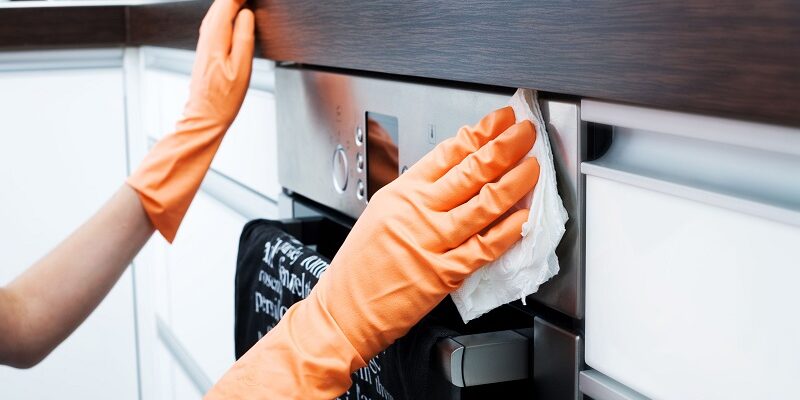In the heart of the modern home, stainless steel appliances have become an irreplaceable helper in the kitchen, providing functionality and aesthetics. However, their brilliant performance and visual appeal come with certain maintenance requirements. The task of keeping them in a pristine condition is an ongoing struggle for many homeowners. Fortunately, there are a few simple secrets that can help to preserve a stainless steel appliance’s elegance and efficiency.
Understanding Stainless Steel as a Material
Stainless steel has basically become the foundation of modern kitchens because it provides a combination of durability and aesthetics. However, even though this material is resistant to rust and corrosion, it’s still susceptible to fingerprint and smudge marks. Because of that, understanding its nature is the first and key step in preserving its beauty.
If you’ve attempted washing stainless steel items before, you may have unpleasantly found that their appearance has become worse than it was before. The reason for that is that not all cleaning tools and materials are suitable to clean this type of material, and most of them often leave them with even more streaks and result in strong chemical smells.
Essential Cleaning Supplies for Stainless Steel
Protecting stainless steel from stains and marks requires a set of specific tools and supplies, which include:
- Soft microfiber cloths for wiping over the surfaces;
- Mild dish soap to gently clean them without causing damage;
- Warm water to wash away the soap residue;
- Specifically designed stainless steel cleaners for a more targeted approach;
- Rubber gloves to prevent leaving behind more fingerprints.
Each one of these tools and supplies plays a crucial role in the process of cleaning and helps to preserve the stainless steel’s appearance without the risk of damage. Depending on the size of the appliance you’re cleaning, this task will take you between 10 to 30 minutes.
Daily Cleaning and Maintenance
Stainless steel appliances require gentle and regular daily cleaning. However, this doesn’t need to be a complex task. They only need a simple wiping with a damp cloth, followed by a dry buff to remove the accumulation of residue on their surface from being touched frequently. This daily routine provides a protective layer and enhances their resistance to corrosion and rust that may result from stains and wear.
Removing Fingerprints and Smudges
Removing fingerprints and smudge marks from stainless steel surfaces is an ever-present and ongoing chore. They stain the material’s surface and affect the appliance’s appearance with their stubborn presence. Luckily, a specialised cleaner or a simple homemade solution that’s applied along the grain of the material can effectively get rid of them and restore the reflective shine.
Addressing Water Spots and Streaks
Water spots and streaks are another common problem for stainless steel appliances. These imperfections can be taken care of with dish soap and water. However, even though it may sound simple, this task requires patience and persistence, as well as a soft cloth and careful cleaning techniques.
When you’re cleaning stainless steel, it’ll be a lot easier to work on the surface with dish soap if you start by wiping it with a damp microfibre cloth. Afterwards, dampen a second cloth, add a few drops of soap and start wiping very slowly. The less dish soap you use, the better results you’ll get. While you’re doing that, make sure to regularly rinse your cloth in clean water so you don’t redistribute the soap on the surface once again.
Once you don’t see any more suds on the stainless steel surface, you’ve successfully performed the task. If there are any stubborn marks left behind, you might need to try scrubbing a bit more vigorously, alternating between circular and up and down motions.
Polishing Stainless Steel Appliances
Polishing stainless steel provides it with additional protection against spots and marks. For this task, the most helpful tool will be commercial polishers specifically designed for stainless steel surfaces or a small amount of olive oil and a microfibre cloth. Keep in mind also that letting stainless steel air dry isn’t a recommended practice as it can result in water marks on the surface.
In addition, regular polishing will enhance the stainless steel’s natural resistance to rust and corrosion and reduce the likelihood of smudges. This part of the cleaning process should be performed with a light touch and very careful buffing as the final step in its maintenance routine.
Preventive Care Tips
The best course of action to prevent stainless steel from staining is to be proactive. Whenever you notice any imperfections on the material’s surface, act quickly, especially if the stains are from spills. These preventative practices will help protect your stainless steel appliances’ overall integrity over time.
In addition to that, there are a few things that should be avoided in stainless steel maintenance, which include:
- abrasive materials;
- harsh chemicals;
These pose the risk of scratching the stainless steel’s surface, and avoiding them will significantly prolong your appliances’ lifespan.
It’s should be noted that some online sources suggest cleaning stainless steel with vinegar. However, because of the ingredient’s acidic properties, it poses the risk of corrosion, so it’s highly recommended to avoid treating this material with it.
Consider Domestic Cleaning Services
If you’re a person who takes pride in your stainless steel appliances or someone with a busy schedule, consider opting for domestic cleaning services which can provide professional results and take care of your appliances’ condition on a regular basis. The experts are equipped with specialised tools and knowledge, which will allow them to take over the maintenance process and address any issues that you’ve been unable to deal with on your own. Even though this option may sound like a huge investment, it’ll bring you peace of mind as well as a thoroughly and expertly cleaned kitchen.
Final Words
The long-term care of stainless steel is a commitment which involves regular cleaning, periodic polishing and giving prompt attention to any damage. Even though it may sound daunting, consistent care will guarantee that your appliances remain in good working condition and preserve their original appearance for as long as possible.













Comments